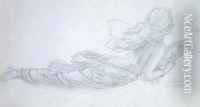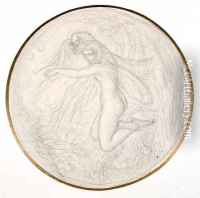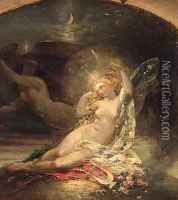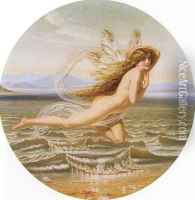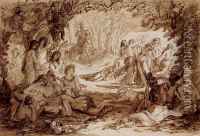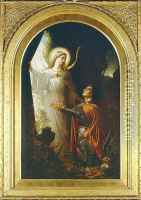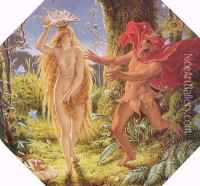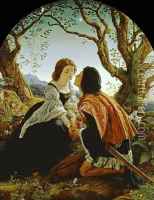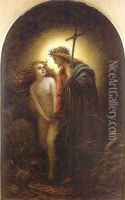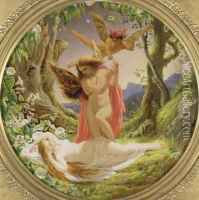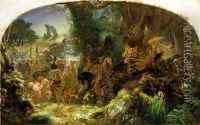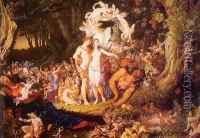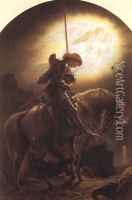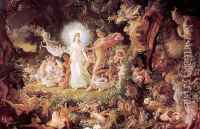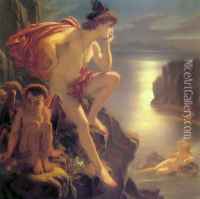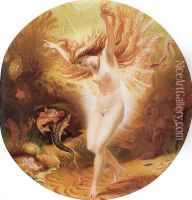Sir Joseph Noel Paton Paintings
Sir Joseph Noel Paton was a Scottish artist, illustrator, and sculptor, known for his detailed and imaginative fairy paintings as well as his religious artworks. Born on December 13, 1821, in Dunfermline, Fife, Scotland, Paton developed an early interest in art, influenced by his father, a damask designer. He showed great promise from a young age and went on to study at the Royal Academy Schools in London.
In the 1840s, Paton's work began to gain recognition. He was particularly admired for his adept use of detail, which was evident in his fairy and subject paintings, such as 'The Quarrel of Oberon and Titania' (1849) and 'The Reconciliation of Oberon and Titania' (1847), inspired by Shakespeare's 'A Midsummer Night's Dream.' These works reflect the Victorian fascination with the supernatural and the minute.
Paton's religious works, on the other hand, were characterized by their emotional depth and spiritual gravity. His painting 'The Bluidie Tryst' (1855) is a notable example, featuring a dramatic scene set during the Covenanter period of Scottish history. Paton's paintings often contained moral or allegorical messages, which resonated with the Victorian audience.
Throughout his career, Paton received numerous accolades. He was appointed Queen's Limner for Scotland in 1866 and was knighted by Queen Victoria in 1876. In addition to painting, he also produced a number of sculptures and was a talented writer, having published poetry and a book on the artist Raphael.
Sir Joseph Noel Paton's legacy includes his influence on the Pre-Raphaelite Brotherhood, though he was not formally a member. His work also contributed to the broader field of Victorian art, where imagination and a high degree of finish were highly prized. He passed away on December 26, 1901, in Edinburgh, leaving behind a body of work that continues to be celebrated for its intricate beauty and thematic complexity.
